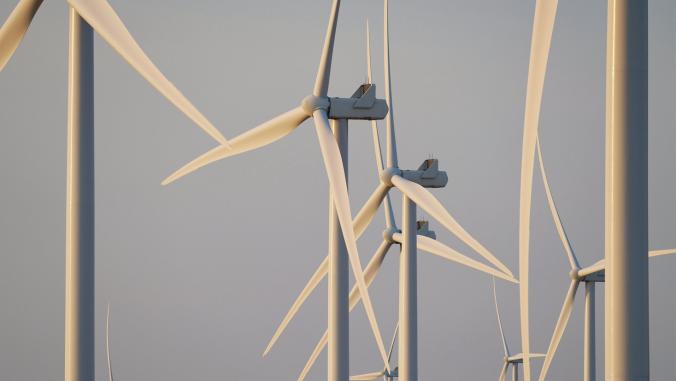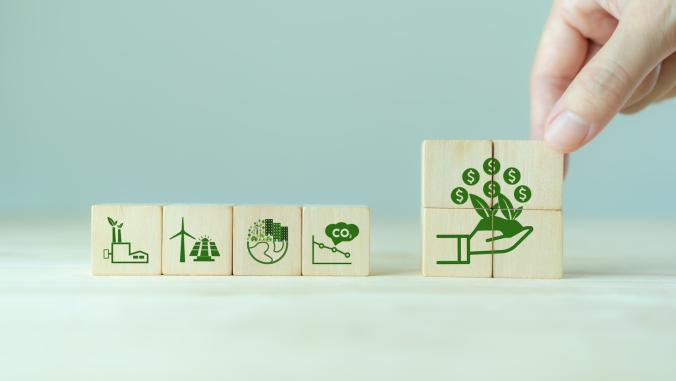The market for bond issues linked to ESG and sustainability strategies held its own during the first half of 2022, despite concerns about the downturn. What’s more, the third quarter ushered in a burst of activity — with General Motors issuing one of the largest corporate green bonds to date, Lenovo jumping in with its inaugural bonds, and PepsiCo closing on its second offering since 2019.
More details on all three in a moment, but first, a recap: The volume for global sustainable bonds reached $225 billion in the second quarter, down 19 percent from the year-earlier period but up 2 percent from the first quarter of this year, according to an analysis by Moody’s.
Moody’s reports that these sorts of issues, which include green bonds, social bonds, sustainability-linked bonds, represented 15 percent of the total bond market, which is the highest ratio on record. Green bonds totaled $136 billion in Q2, and the Moody’s analysis indicates that the firm continues to expect sustainable bond issues to top $1 trillion in 2022.
Indeed, the third quarter started strong, with technology company Lenovo, automaker GM and food and beverage company PepsiCo all moving to price bond offerings worth more than $1 billion during July.
Lenovo’s inaugural $1.25 billion bond offering includes both 5.5-year and 10-year notes, which the company said were bought by investors from many geographies; most buyers, 41 percent, were from the Asia-Pacific region. Lenovo’s bonds will go toward energy efficiency, renewable energy, green buildings, circular economy "adapted products, production and processes" and clean transportation.
We have a need, there was an appetite.
GM’s bonds, which at $2.25 billion are billed as the second-largest corporate issue, included two tranches of notes that come due in 2029 and 2032. They will be used to finance or refinance projects as described in the company’s Sustainable Finance Framework published earlier this year.
Among the categories outlined in that document are social bonds related to supporting supplier diversity and workforce development; loans, leases and other financing products that help individuals, dealers and fleet manager transition to electric vehicles; and investments in clean transportation technologies including batteries and fuel cells, charging solutions, energy as a service, microgrid and vehicle-to-grid development and so on.
PepsiCo’s offering of a 10-year $1.25 billion green bond is the company’s second such instrument to date: It closed a $1 billion green bond in 2019; as of December 31, 2020, it had used $858 million of the proceeds. According to PepsiCo’s latest green bond report, the financed projects included decarbonization efforts for both its own operations and those of its supply chain, sustainable packaging and plastics initiatives, and water sustainability.

For example, $98 million of proceeds went toward a green research and development facility in Valhalla, New York. Generally speaking, the project sizes ranged from $60,000 to more than $14 million; the average was $1.7 million, according to the report.
PepsiCo CSO Jim Andrew said the proceeds for the new bond will be allocated according to the criteria laid out in PepsiCo’s new Green Bond Framework, published July 14. Given that the older one is almost completely allocated, there was a need for the new issue to fund portions of the company’s PepsiCo Positive (pep+) strategy, which centers on regenerative agriculture, building a circular and inclusive value chain and making products that are better for people and the planet. "We have a need, there was an appetite," Andrew said.
There are four overall categories outlined in the framework, each aligned with specific United Nations Sustainable Development Goals (SDGs) as well as the Green Bond Principles:
- Circular economy and virgin plastic waste reduction efforts, including investments that will help it purchase more recycled PET or bio-based PET for its packaging; development of compostable or biodegradable packaging options; recycling infrastructure; and reuse solutions. (SDG 9 — Industry, Innovation and Infrastructure, SDG 12 — Responsible Consumption and Production)
- Decarbonization and resilience in PepsiCo’s operations and value chain, such as energy efficiency and industry GHG emissions reductions, renewable energy procurement, zero-emissions transportation including electric vehicles, and certified green buildings. (SDG 7 — Affordable and Clean Energy, SDG 11 — Sustainable Cities and Communities.)
- Pursuing net-positive impact for water, through investments in water recycling and reuse, watershed replenishment for high-risk areas and water savings technologies including drip irrigation for agriculture. (SDG 6 — Clean Water and Sanitation, SDG 12 — Responsible Consumption and Production, SDG 15 — Life on Land)
- Regenerative agriculture, including training to help farmers adopt practices that improve soil health, such as planting cover crops or reducing fertilizer and pesticide applications. (SDG 2 — Zero Hunger, SDG 8 — Decent Work and Economic Growth)
PepsiCo will report annually on how proceeds are allocated, a disclosure that will be assured by a "nationally recognized firm registered with the Public Company Accounting Oversight Board." The company will also report various impact metrics such as how these projects increase the percent of rPET or renewable or bio-based PET in its packaging, estimated reductions of emissions, avoided water use and water replenished and the number of acres using regenerative agriculture practices.
We are looking to go as deep into the supply chain as possible.
An overview of PepsiCo’s ESG goals, as well as its latest progress report, illustrate the work ahead. For example, PepsiCo aspires to help spread regenerative agriculture practices to more than 7 million acres (a new goal as of 2021); it’s currently at about 345,000 in the U.S. and Canada. Its water-use efficiency improved by 18 percent against a 2015 baseline on the way to a 25 percent improvement by 2025, and PepsiCo replenished more than 6 billion liters. The company has so far reduced absolute GHG emissions in Scope 1 and Scope 2 by 25 percent compared with a 2015 baseline, on the way to its 75 percent targeted reduction by 2030. However Scope 3 emissions from its value chain rose 5 percent in the most recent reporting year, "due largely to unprecedented business growth." The goal is to reduce those emissions by 40 percent.
When I asked Andrew about the Scope 3 metric, he pointed to a number of initiatives that PepsiCo has adopted to help its value chain adopt more sustainable business practices, including its program to help suppliers set science-based targets and procure renewable energy. "We are looking to go as deep into the supply chain as possible," he said.
Another example of how PepsiCo will invest in its supply chain comes from Europe, where the company recently identified six industrial climate tech startups to help with supply chain pilots over the next year. The companies include: Pulse Industrial and Bren Power, which sell technologies to help reduce steam losses in production; Ozo Innovations, which reduces thermal energy, water and chemicals associated with cleaning manufacturing plants; UBQ Materials, which turns organics and unrecyclable plastics into bio-based thermoplastic; Security Matters, which allows for tracking of packaging waste using blockchain; and Elateq, which removes pathogens and contaminants in water.






